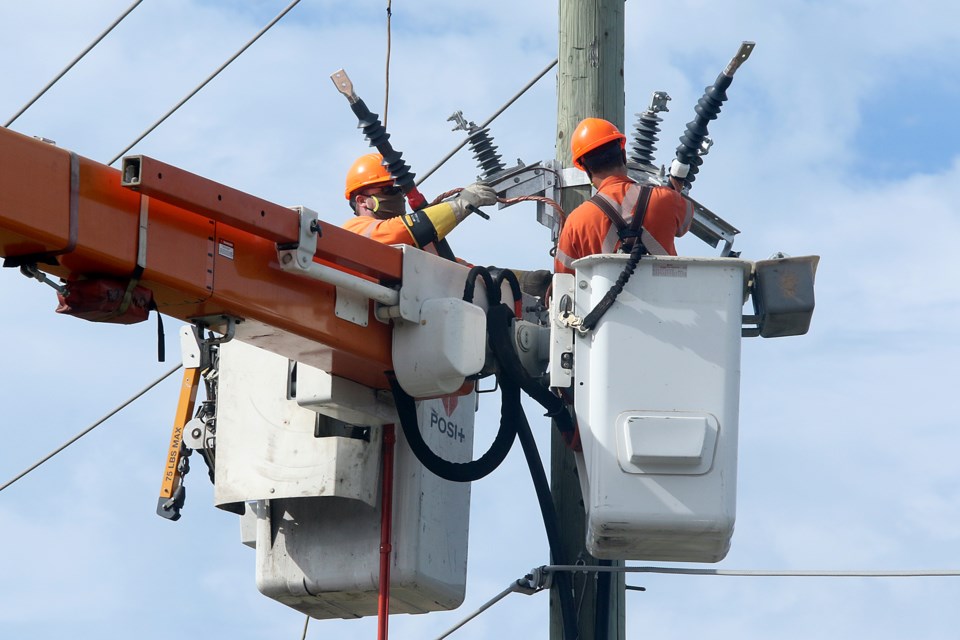THUNDER BAY – A proposed change to Synergy North’s rate model would result in slightly higher electricity costs, but could be outweighed by municipal tax savings, leaders say.
The shift from the current “rate minimization” model to a “rate of return” model would cost residential rate payers an estimated $9 to $10 more per year as of 2024, City of Thunder Bay treasurer Linda Evans estimated in a report to city council presented Monday.
However, the change could reduce municipal taxes for the median city property owner by $12 to $21 a year, the report found.
City administration recommended the change, saying it would ultimately save residents money and benefit the municipal government. A vote on the recommendation is scheduled for Oct. 18.
The rate of return model would see Synergy North begin paying interest to the city on a note payable created when Thunder Bay Hydro was incorporated in 2000, in the midst of a restructuring of the provincial electricity system by the provincial government.
An option recommended by Evans would see the company pay the city a lump sum of $10 million in 2023, and interest payments of $470,000 a year after that. Those funds could be used to replace tax-supported capital spending, potentially lowering tax bills, she suggested.
The city holds an ownership stake of just over 90 per cent in Synergy North, with the City of Kenora holding the balance of shares after a 2019 merger. The rate changes won’t impact Kenora-area customers, who already pay a similar charge on their bills.
Under the current shareholder agreement, the City of Thunder Bay collects no dividends or interest on long-term debt in the form of the note payable. The note has a current balance of about $26.5 million, after Synergy North paid down $7 million of the debt in 2012 and another $1.4 million in 2017.
The rate minimization model has helped keep rates slightly lower for local customers, said Synergy North CEO Tim Wilson on Monday, but it has also robbed the city of potential revenue.
Evans’ report stated Synergy North’s rates, with an average annual cost of $1,437, ranked fifth lowest out of 75 Ontario utilities, which have an average annual cost $1,479.00, based on usage of 800 kWh per month.
A $10 annual increase in costs would amount to a hike of about 0.7 per cent. Rates would still remain among the lowest in the province, Wilson said.
Out of 55 Ontario municipalities eligible to receive interest from local distribution companies, only Thunder Bay and Fort Frances now decline to do so, the report noted.
It was initially hoped the rate minimization model would spur business investment, said Mayor Bill Mauro, but he said that benefit hadn’t materialized.
“It was well intended, but here we are 20 years later,” he said. “I don’t think we can point to… the low rates that are charged as having necessarily incented any economic development in the City of Thunder Bay or in the region.”
He said the current arrangement amounted to municipal tax payers subsidizing Synergy North rate payers, while acknowledging many residents find themselves in both camps.
Coun. Andrew Foulds raised some concerns over the change.
“People in Canada in the 21st century cannot survive without electricity,” he said. “I really struggle with the movement away from the rate minimization model. I think we should be very proud we’re the fourth or fifth lowest distribution costs.”
Coun. Brian Hamilton disagreed, saying there was an overall benefit to residents.
“Rates will increase slightly, but… taxes will actually go down substantially” under the proposed options, he said. “It’s important to recognize there’s some strong financial benefit for the average citizen.”
The new model would require approval from the Ontario Energy Board (OEB).
Synergy North said it requires direction from the city by the end of 2021, for changes that would take effect in 2024.
The company’s next cost of service application to the OEB isn’t due until the summer of 2023, but it said preparing the application is complex and takes up to two years.
